Tips on how to take good pictures of your natural home
|
|
| |
|
|
|
|
|
| |
|
Natural Homes wants to get as many people as
possible excited about using natural materials to build
sustainable, healthy, safe and beautiful homes. Part of the
challenge of reaching a mainstream audience is having good
quality pictures of the wonderful homes people build together.
This article helps you understand what a good picture is and
why it works well. |
|
|
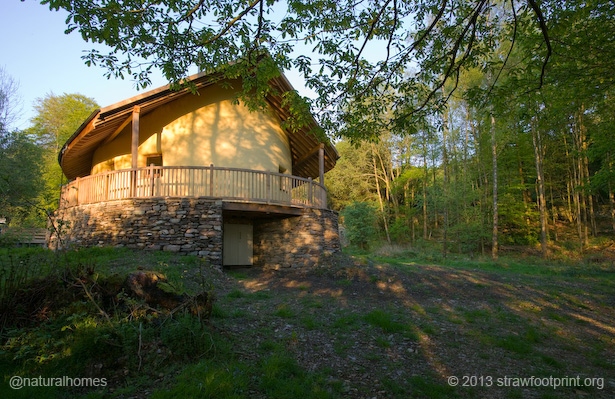 |
|
|
|
|
The Zen ViewA Zen view,
illustrated in the picture above, is when your view of something in the distance
is framed and restricted by the foreground. It makes the distant
object more intriguing, something to investigate, to be curious
about. It makes the building more attractive than it might have been without
the Zen framing. The Zen view works best if the foreground frame
is natural like the branches of a tree. It can also be achieved by
using objects in the foreground combined with the child's view (see
below). Find out about this
straw bale building. |
|
|
|
|
|
|
|
|
|
|
|
The Oblique
ViewThe best angle to take on a building
is a corner shot where you can see two walls of the building
at the same time. If possible, as illustrated in the picture
right, also try to get a view of the roof. For all the
pictures you take it's a good idea to be aware of the various
design patterns from
A Pattern Language, a design book by Christopher
Alexander. This picture captures the following patterns but
the house could just have easily been photographed without
them: No.111 Half-hidden garden, No.112 Entrance transition,
No.117 Sheltering roof. Additionally the windows of this house
shows pattern No.239 Small panes. It would have be difficult
to avoid taking a picture of the house without showing this
feature but this picture emphasises the pattern because of the
strong reflected light in the attic window which also draws
attention to pattern No.117 the sheltering aspect of the roof.
All together these features make the building attractive and a share worthy picture in
social media circles. Find out about the
thatched cottage right. |
|
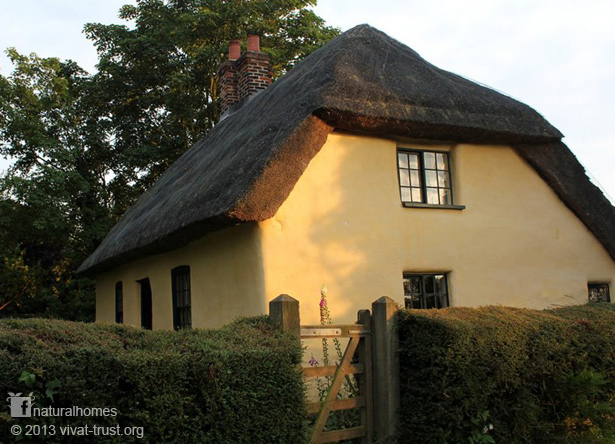 |
|
|
|
|
|
|
|
|
|
|
|
The Child's
View
When you were a child everything was a mystery to
you. You can take an onlooker back to those days by taking a
picture of your home from knee height. This also helps to introduce
foreground into the picture and can, if you're clever at using
plants, offer partial Zen elements.
You can see another example of this at work in
this picture of a
jumbo straw bale guesthouse in Italy.
About
this home: In the mid 1800s, when this Norwegian home was built,
there was a strict tradition of inheritance where the 2nd child of
a farmer may become landless, known as a Husmann (in English a
Cotter). This cotter's farm is at the
Norwegian
Folk Museum in Oslo. |
|
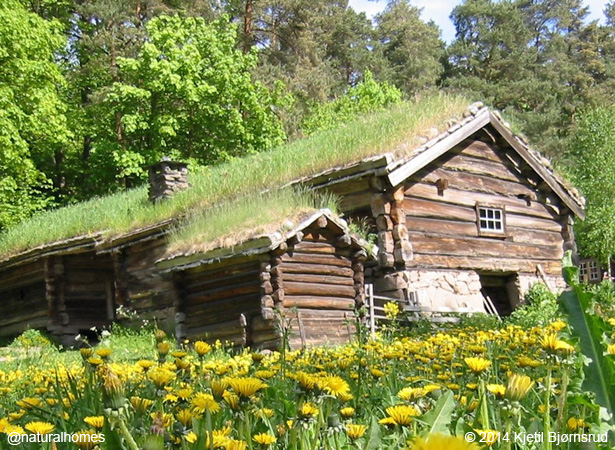 |
|
|
|
|
|
|
|
|
|
|
|
The Setting
View
You can make the home attractive, not by taking a
picture of the home directly but by using the home as a foreground
to the environment around the building. Doing this implicitly
lends the quality of the view to the building. Of course this can
backfire if you are looking over a motorway, but most naturally built
homes are placed sympathetically in their environment so it's
likely there is a good angle you can take for your home. Find out about
the
Italian Trulli. |
|
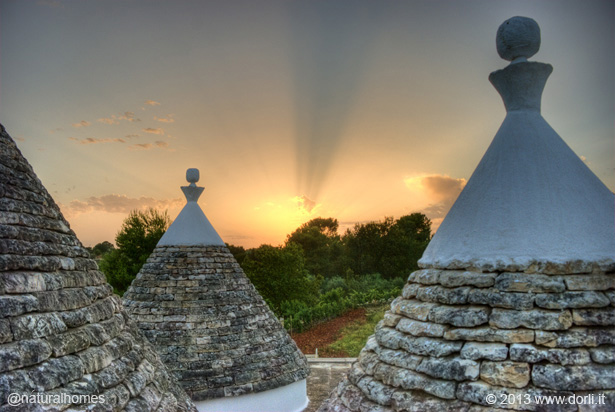 |
|
|
|
|
|
|
|
|
|
|
|
The Tidy Natural
View
Even though this house has just been built the
grounds around it have been tidied up with some minimal
landscaping but more importantly there are no tarpaulins, plastic
chairs and buckets or ladders lying around.
This picture would have been improved with more
light and shade contrast and some life in the building by leaving
the door and one of the lower sash windows open with perhaps
some flowers on the windowsill. More improvements by taking the
child's view with some of the bushes on the left of this home in
the foreground. A pattern language trick would be to hide
the line between the building and the ground with a stack of
firewood and/or a garden bench. Dressing the building helps the
building's connection to the earth, pattern No.168.
More about this
straw bale house. |
|
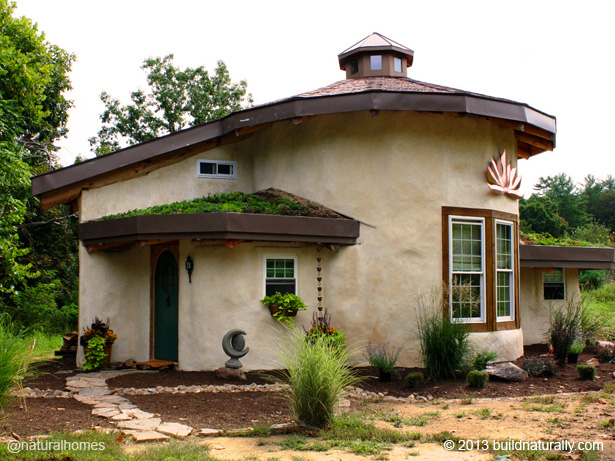 |
|
|
|
|
|
|
|
|
|
|
|
The Light & Shade
View
Ideally the building should show some light and
shade contrast as in the picture illustrating the oblique view
above, but
you can achieve the same balance by moving the camera into the
shade and taking the picture of the house in full sunlight. This
adds the element of mystery similar to the child's view.
More about this
Celtic roundhouse. |
|
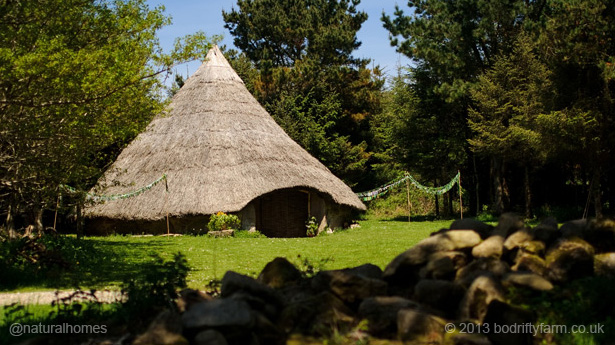 |
|
|
|
|
|
|
|
|
|
|
|
The Close and Distant
View
Finding a view of the home that includes
foreground objects, in this case a garden bench and distant
objects, here the trees in the background, helps to put the
building in its environment. This picture also illustrates the
oblique view and light and shade contrast. Note too that there are
no unnatural materials cluttering the scene. The picture would be
improved by some sign of life in the building like opening the
window or door and maybe adding a basket of food to the seat of bench
with a tablecloth hanging down.
Find out more about this
straw bale cottage in Poland. |
|
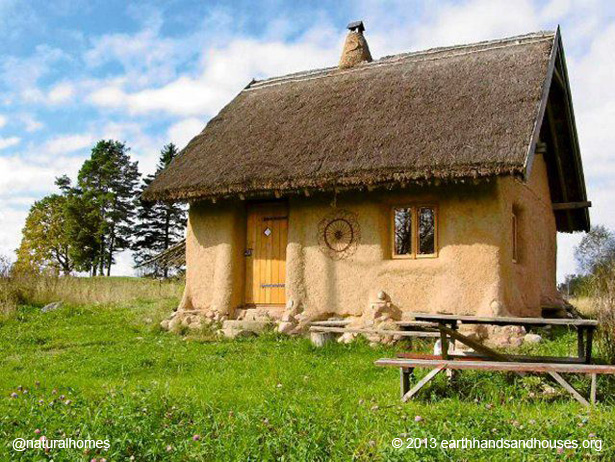 |
|